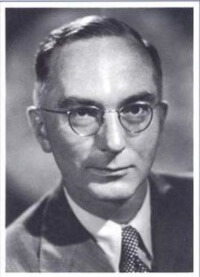From Magna Carta to Abraham Lincoln

Obviously, the representative ruler of an articulated society cannot represent it as a whole without standing in some sort of relationship to the other members of the society. Here is a source of difficulties for political science in our time because, under pressure of the democratic symbolism, the resistance to distinguishing between the two relations terminologically has become so strong that it has also affected political theory.
Ruling power is ruling power even in a democracy, but one is shy of facing the fact. The government represents the people, and the symbol “people” has absorbed the two meanings that, in medieval language, for instance, could be distinguished without emotional resistance as the “realm” and the “subjects.”
This pressure of the democratic symbolism, now, is the last phase of a series of terminological complications that commence in the high Middle Ages with the very beginnings of the articulation of Western political societies. The Magna Carta, for instance, refers to Parliament as the commune consilium regni nostri, as “the common council of our realm.” Let us examine this formula. It designates Parliament as the council of the realm, not perhaps as a representation of the people, while the realm itself is possessively the king’s. The formula is characteristic for an epoch where two periods of social articulation meet.
In a first phase the king alone is the representative of the realm, and the sense of this monopoly of representation is preserved in the possessive pronoun attached to the symbol “realm.” In a second phase, communes within the realm, the shires, boroughs, and cities, begin to articulate themselves to the point where they are capable of representing themselves for action; and the barons themselves cease to be individual feudatories and also form themselves into the baronagium, a commune capable of action as it appears in the forma securitatis of the Magna Carta.
The details of this complicated process need not be traced; the point of theoretical interest is that the representatives of the articulate communes when they meet in council form communes of a higher order, ultimately the Parliament of two houses, which understands itself as the representative council of a still larger society, of the realm as a whole. With advancing articulation of society, thus, develops a peculiar composite representative, along with a symbolism expressing its internal hierarchical structure.
The weight of representation remained with the king in the centuries following the Magna Carta . . . . Not only is the realm the king’s, but the prelates, the magnates, and the cities are also his. Individual merchants, on the other hand, are not included in the representative symbolism; they are not the king’s but always “of the realm” or “of the city,” that is, of the whole or of an articulate subdivision. Ordinary individual members of the society are plainly “inhabitants” or “fellow-citizens of the realm.” The symbol “people” does not appear as signifying a rank in articulation and representation; it is only used, on occasion, as a synonym for realm in a phrase like the “common welfare of the realm.”
The melting of this representative hierarchy into one single representative, the king in Parliament, took a considerable time; that such a melting process was under way became theoretically tangible only centuries later, in a famous passage in the address of Henry VIII to Parliament in Ferrers’ case. On that occasion, in 1543, the king said: “We be informed by our judges that we at no time stand so highly in our estate royal as in the time of Parliament, wherein we as head and you as members are conjoined and knit together into one body politic, so as whatsoever offence or injury (during that time) is offered to the meanest member of the House is to be judged as done against our person and the whole Court of Parliament.”
The difference of rank between king and Parliament is still preserved, but it can now be symbolized through the relationship of head and members within one body; the composite representative has become “one body politic,” the royal estate being enhanced by its participation in parliamentary representation, the Parliament by its participation in the majesty of royal representation. The direction in which the symbols shift will have become clear from this passage: When articulation expands throughout society, the representative will also expand until the limit is reached where the membership of the society has become politically articulate down to the last individual and, correspondingly, the society becomes the representative of itself.
Symbolically this limit is reached with the masterful, dialectical concentration of Lincoln’s “government of the people, by the people, for the people.” The symbol “people” in this formula means successively the articulated political society, its representative, and the membership that is bound by the acts of the representative. The unsurpassable fusion of democratic symbolism with theoretical content in this formula is the secret of its effectiveness . . . .
For the present it should be noted that the transition to the dialectical limit presupposes an articulation of society down to the individual as a representable unit. This peculiar type of articulation does not occur everywhere; in fact, it occurs only in Western societies. It is by far not an appurtenance of the nature of man but cannot be separated from certain historical conditions that, again, are given only in the Occident. In the Orient, where the specific conditions are historically not present, this type of articulation does not occur at all — and the Orient is the larger part of mankind.
This excerpt is from Modernity Without Restraint: The Political Religions, The New Science of Politics, Politics, Science, and Gnosticism (Collected Works of Eric Voegelin 5) (Columbia, MO: University of Missouri Press, 1999)
